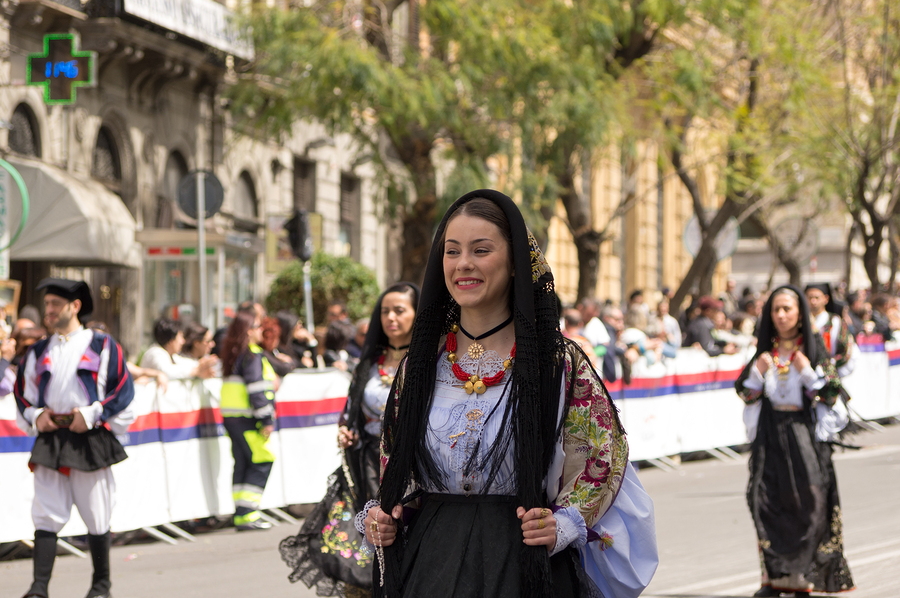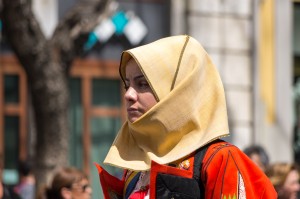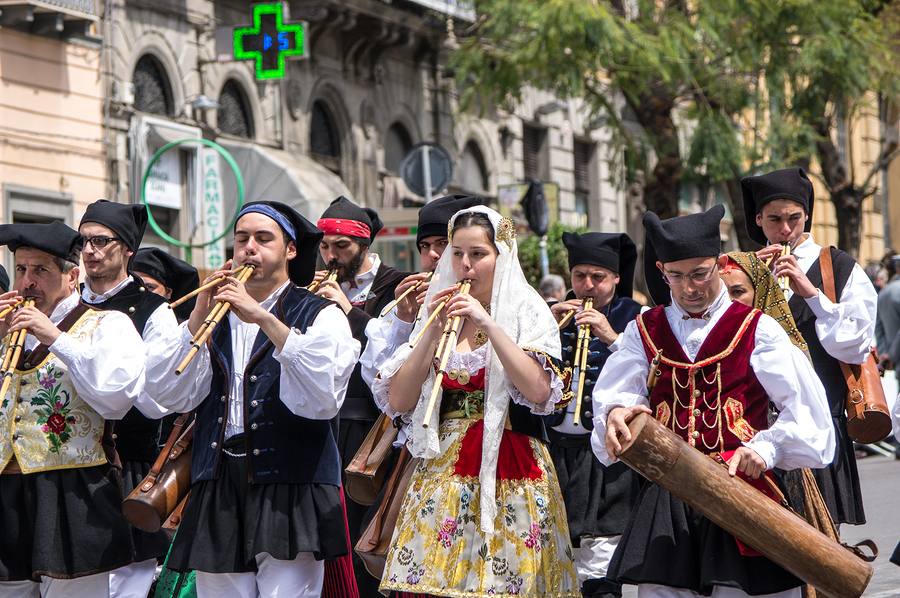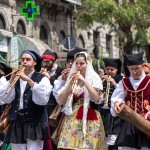
The month of May is filled with fun, flowers and a vibrant pallet of colors. Not only is spring in full bloom, but there are also many festive events in Italy that mark this time of the year on our calendars. Among these include the Festival of Sant’Efisio, a centuries old tradition that is considered to have one of the most colorful religious processions in the world.
History
 The festival takes its origins from an event that happened in the 17th century. Sardinia was hit with a plague that killed almost half of the inhabitants of Cagliari. The people prayed to their patron saint, Efisio di Elia, and asked to be saved from the contagion. The plague miraculously disappeared sometime after this. In return for their deliverance, they promised that would carry his statue from the church in Cagliari to the one in Nobu every year – a tradition that still holds true to this day.
The festival takes its origins from an event that happened in the 17th century. Sardinia was hit with a plague that killed almost half of the inhabitants of Cagliari. The people prayed to their patron saint, Efisio di Elia, and asked to be saved from the contagion. The plague miraculously disappeared sometime after this. In return for their deliverance, they promised that would carry his statue from the church in Cagliari to the one in Nobu every year – a tradition that still holds true to this day.
Efisio, the patron saint, was originally a Roman officer sent to Sardinia to suppress the rise of Christianity in the region. However, the man had a change of heart when he was said to have seen a vision, which made him convert to Christianity. As a result, he was imprisoned in Cagliari and asked to renounce his new faith. After refusing this demand, Efisio was eventually beheaded on the beach in Nora in 303.
The festival was originally combined with the spring harvest and has grown into a lavishly colorful affair over the years. Beginning on the first of May, it involves a four day procession from Cagliari to Nobu, including thousands of inhabitants of Sardinia dressing up in colorful costumes as they parade the statue of their patron saint to the distant church.
The Procession
Thousands of participants join in this festive procession, all wearing bright and colorful clothing that speak of their heritage. The first day of the procession begins with 30 “Traccas” or oxen-drawn peasant carts that are decorated with flowers and all kinds of local produce. Following the traccas are villagers wearing their traditional costumes, as they chant religious prayers during the parade.
The next part of the procession involves horse riders who hail originally from the Campidano region. The horses they ride are also featured in other Sardinian festivals like the L’Ardia di San Constantino, as well as their local version of Carnevale. It’s common to see horses carrying couples, with the women wearing brightly colored clothing that is particular to the region.
The statue of Saint Efisio is then taken out of the church and carried inside a golden coach as it is driven by two oxen and accompanied by a pair of guardsmen. Joining the this procession are members of the religious order dedicated to the patron saint, as well as representatives of the mayor and other religious men and women of the faith.

The rest of the revelers join in the parade through the streets of Cagliari. The people then make their way through the countryside towards Nora. It is common to see smaller religious ceremonies being observed during this trip. By the second day, the procession makes its way through Pula and eventually reaches its destination in the evening. The statue of the saint is then placed in the church, where a number of masses are celebrated on the next day. On the 4th of May, the patron saint then makes its way back towards Cagliari to be greeted by more faithful devotees in the Church of Stampace.












